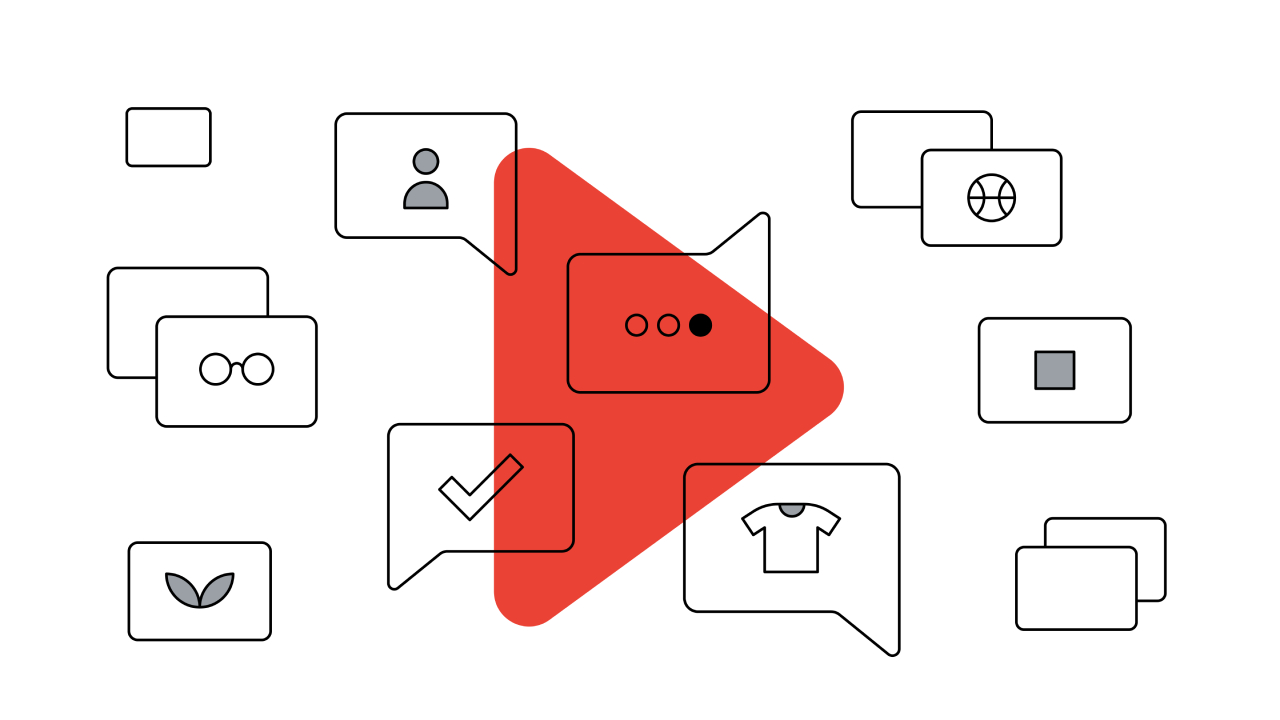Change the channel, open the fridge, check your phone, fast forward, skip. People have found ways to avoid advertising since—well, the beginning of advertising. And now the power to choose what to watch is firmly with the consumer. We’ve got new research and five keys on creating unskippable ads.
People have been honing their skipping skills on TV for a long while. Thanks to DVR, second screens, and remote controls, TV viewers have plenty of ways to avoid watching commercials. In fact, only 35% of paid TV advertising in Australia is actively viewed.1
And ad skipping is just as prevalent on digital channels; YouTube TrueView even has a built-in “skip” button, allowing people to skip past the ad after five seconds, with advertisers only paying when people choose to watch the ad. Advertisers aren’t confined to a 30-second time constraint and can tell longer (or shorter) stories, but they also have to create more engaging stories that will grab and hold the audience’s attention, fast.
"79% of Australians say they like skippable-ad technology because it allows them to choose ads they’re interested in seeing."
The good news is that, with digital video platforms, we can more accurately measure how many people skip, and more importantly, why and when they skip. We dug into which creative choices capture audiences’ attention, and put together five keys for how advertisers can start creating unskippable ads.
Understanding why people skip in our new media landscape
Australians are big fans of being able to skip ads: 79% say they like skippable-ad technology because it allows them to choose ads they’re interested in seeing.2
We know people are skipping ads, so we dug into what makes them skip instead of choose to watch. The most common culprit? Relevancy. Of those who say they skip because of the message, 27% say the message is not relevant to them and 33% say they aren’t interested in the product or service offered.2 When we asked about the creative, the answers were all about interesting work: 26% of Australian viewers don’t find what they see interesting and 25% don’t feel curiosity.2
"Ads that feature humor or celebrities are not only associated with higher view-through rates; they also see higher lifts in brand awareness and ad recall."
This is a great opportunity for brands. Be relevant and interesting and you’ll get rewarded with an audience choosing to watch your ad. This is a new kind of leaning into advertising.
Be unskippable: findings from the research
Thousands of ads run on YouTube every day. So, when we look at that data in aggregate, what patterns emerge? What can we learn from existing video ads about creative that works in the first five seconds? We looked into thousands of TrueView ads across 16 countries and 11 verticals, categorising them according to 170 creative attributes,* including brand-name mentions and featured celebrities. We used aggregated analytics from Google Ads3 to see how long people watched these ads without hitting the skip button. To measure brand awareness and ad recall, we took advantage of Google’s Brand Lift.
We found that although there are no set rules for creating ads people choose, certain creative choices are associated with how long viewers watch and how well they remember ads.

1. Brand placement matters. When ads on YouTube include the brand early on, through a logo or an audible brand mention, there's an inverse relationship between recall and engagement. Although ads with the brand in the first five seconds have higher ad recall and brand awareness lift, people are more likely to skip them.
Our study showed that viewers are less likely to watch and remember brands and ads when they feature floating brand logos that aren't actually on the advertised products. If you’re going to show your logo in the first five seconds, make sure it’s tied to your product, like in this clever Tic Tac ad that appeared on the Australian YouTube Ads Leaderboard.
2. Make ‘em laugh. We organised ads into ten categories of style and tone, including "humorous," "emotional," and "calming.” Across the board, whether we were looking for a lift in brand metrics or how long the viewer watched, humor took the cake. People are more likely to watch humorous ads, like this doozy from Sportsbet; and funny ads like this also see greater lifts in ad recall and brand awareness.
If humor just isn't right for your brand, consider taking a "suspenseful" or "emotional" tone in the first five seconds. These types of ads were also associated with high ad recall.
3. Mixed results on music. Music was included in 80% of the ads and we found some musical styles to be more effective than others in the first five seconds. People were more likely to skip ads that featured calming, relaxing, or action-oriented music. Happy, uplifting, or mysterious music was shown to boost view-through rates. This Air New Zealand ad starts off with an energetic and uplifting beat, and also made it on the Australian YouTube Ads Leaderboard.
Surprisingly, when it came to brand awareness, we found that featuring any music in the first five seconds may have a negative impact. Perhaps people are intrigued by the change of pace in ads without music or don't immediately recognize videos without music as ads, like this Budget Direct ad, which foregoes music and gets straight to the action.
Try testing ads with and without music, and use analytics and Brand Lift to see what works for your brand.
4. Lead with recognizable faces. No surprises here: Happy, smiling faces make people want to see more. Whether ads incorporate a YouTube star like Lauren Curtis or a comedian like Ricky Gervais (for Optus), celebrities were found to increase brand lift and view-through rate.
Featuring women and children in the first five seconds also gave view-through rate a bump.
5. Use creative elements wisely. Creative elements can impact brand metrics in different ways. Animation is good across the board, boosting view-through and ad recall. Clear calls to action, like this “ask for tips” at the end of Air Wick Australia’s ad or this simple “find out more” at the end of Telstra’s snappy ad, are correlated with higher brand awareness lift.
Interactions with the viewer can cut both ways. Looking at the camera, speaking to or asking the viewer a question, and giving a testimonial all have negative associations with view-through rate. However, talking directly to the camera has a strong positive association with ad recall lift.
Keeping all this in mind, remember that averages will always be just that: averages. Exceptions to “rules” will abound, and there will never be a “creative-by-numbers” solution for video ads. So you continue bringing the creativity and pushing the envelope; we’ll continue to use data to figure out what types of stories work best in the modern, mobile age.
*All ads used had at least 10,000 impressions between January 2012 and February 2014. 10% of ads were coded by two people to ensure consistency, and attributes with less than 90% agreement were discarded.







